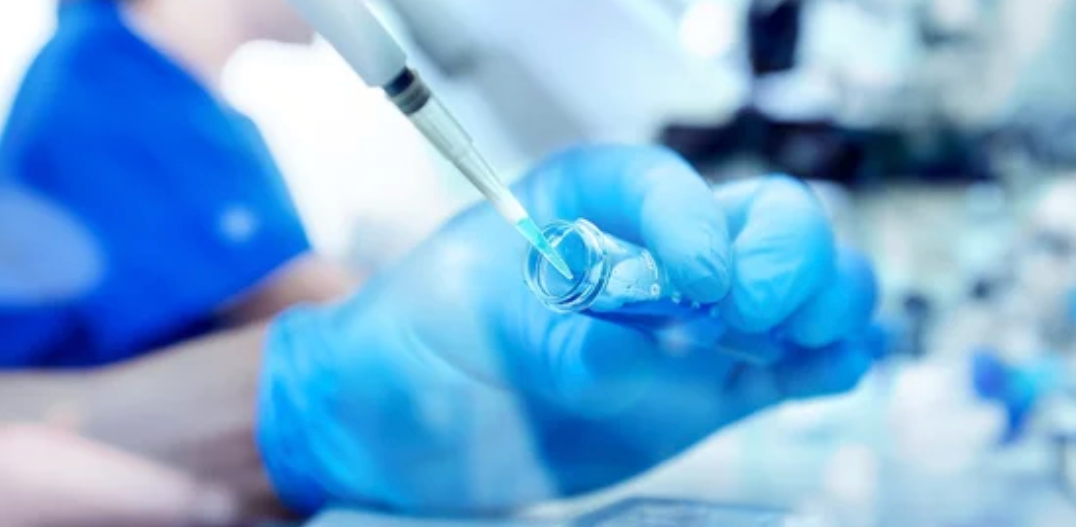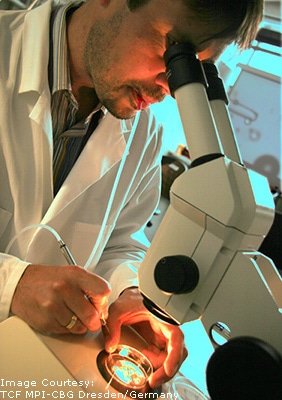
Max Planck Institute of Molecular Cell Biology
At the Transgenic Core Facility (TCF) of the Max Planck Institute of Molecular Cell Biology in Dresden, Germany, Group Leader Ronald Naumann is surrounded by rodents—knock-out mice that is. Naumann’s job is to produce transgenic mice created with an altered DNA structure for research purposes. He uses Hamilton Thorne’s XYClone® to help him perform laser assisted embryonic stem cell (ES) injection and the IVOS to measure the viability of previously frozen sperm.
Naumann started using the XYClone® in 2007 after reading about the effectiveness of using laser assisted injection at the eight-cell stage instead of the conventional blastocyst injection methods being used at the time. The article published in Nature Biotechnology used the XYClone® to conduct comparisons between the two procedures, and the experiments “resulted in dramatically higher ES cell contribution than the blastocyst injections” (Poueymirou et al. 2007).
Following the discovery of CRISPR for gene editing in 2013, there has been concern about the usefulness of laser assisted ES-cell injection. However, Naumann believes that there is still a valid need for the ES-cell injection technique and his lab generates 15 to 20 mouse lines a year using this process.
“The CRISPR technique works well in generating mice with point mutations or full Knock-Out by deletion,” Naumann says. “But scientists are working much more efficiently in researching gene functions using conditional Knock-out systems,” he continued. “Conditional Knock-out is more interesting because it allows the gene and its product to be floxed (sleeping) in one tissue type or organ, for example the brain, but the protein would still be present in other organs. With CRISPR, it is not yet possible to achieve this result. A conditional DNA construct is simply too large for an integration into the mouse genome by CRISPR.”

Max Planck Institute of Molecular Cell Biology-Transgenic Core
www.mpi-cbg.de
When producing these mutant mice, scientists follow an ethical code of conduct known as the Three R’s: replace the use of animals, reduce the number of animals used and refine the way experiments are conducted.
As a person who loves his profession and the animals he works with, Naumann believes “responsibility” should be added as an additional “R”. He expresses that using the XYClone® assists him with refining his techniques of ES-cell injections which helps him responsibly decrease the number of mice sacrificed.
Naumann uses the IVOS for measurement protocols of frozen sperm. He states, “Because ‘sperm freezing’ is one of our backup technologies, the IVOS plays a big role in our lab. A standard sperm project is closed with two protocols: One is a fresh sperm measurement and the second is a controlled sample of thawed sperm.”
Aware that his customers expect these parameters to be followed, Naumann performs an analysis with the IVOS to guarantee the sperm’s revitalization. In his experience with Hamilton Thorne over the years, Naumann feels the systems are easy to use and provide stability.
“I like the RED-i function and the advantage that the laser is integrated into the objective.”
Ronald Naumann
Max Planck Institute of Molecular Cell Biology-Transgenic Core
He has also helped set up multiple transgenic facilities and in each lab he recommends use of the XYClone® and the IVOS depending on the lab’s service portfolio.
Naumann believes prospective customers should know about the efficiency and cost reduction provided by our systems. He concludes by saying, “HT products provide a good method to make the reduction of animals real and supports the 3R’s guidelines in technical development.”
If you would like us to profile one of your customers, please contact Natasha Sudiaman at nsudiaman [AT] hamiltonthorne [DOT] com.
References:Poeymirou WT et. al. F0 generation mice fully derived from gene-targeted embryonic stem cells allowing immediate phenotypic analyses. Nature Publishing Group. 2007 Jan; 25(1): 91-99. Open Article Access.Zhang J et al. Conditional gene manipulation: Creating a new biological era. J. Zhejiang Univ-Sci B (Biomed & Biotechnol). 2012 Feb; 13(7): 511-524